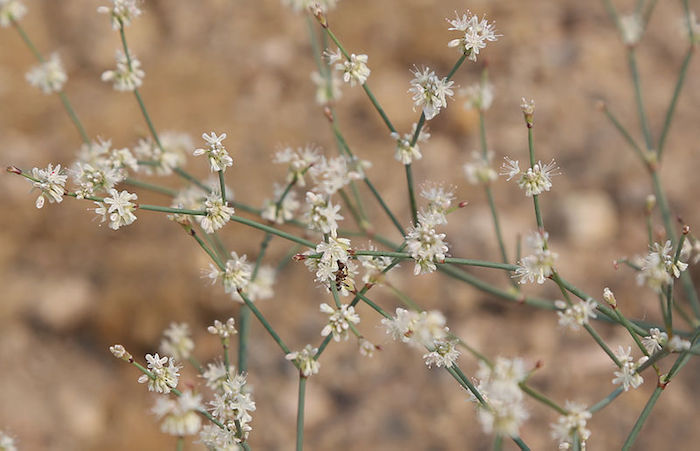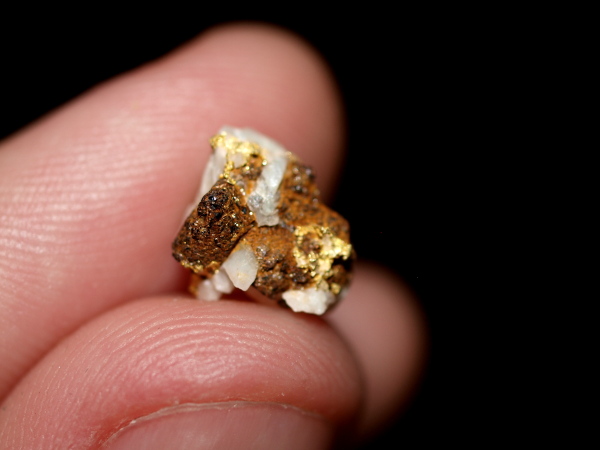
Throughout much of human history, many people have been fascinated with gold. Almost every civilization has prized this special metal. The first question everyone has is “How do I find gold?”
After much effort over the millenia, people have developed lots of ways to find that precious metal. Sometimes, mother nature herself provides hints about where she is hiding some gold. One of these natural indicators can be found by looking at the plants and soil where you think gold might be hidden.
Always remember that gold is rarely found in large chunks. It will either consist of tiny flakes, or as thin streaks of material within rocks. In fact, prospectors refer to the tiny gold flakes found in river sands as “colors.”
Plants Which Might Grow Near Gold
The easiest and most common way of searching for gold is known as placer mining. This refers to finding gold found away from its original underground site and moved over time. Placer mining is most frequently done either at the bottom of streams or where streams used to flow. Cottonwood trees, which grow in wet areas will also grow over top of the areas where streams used to flow. Although an old stream bed may be dry on the surface, there may still be dampness underground. Even though the trees don’t necessarily indicate that gold is there, they (or any type of riparian plant for that matter) may help you to locate a placer gold source if you are in gold country.
One of the plants which often grow in areas over gold deposits is the horsetail plant. Horsetail plants were often used by miners in the past as a guide to where gold might be found. It can tolerate the existence of heavy metals in the soil, which has made people believe gold may be nearby. Ironically, the horsetail plant also had a practical use for prospectors during the gold rush. It was primarily used for washing pots and pans.
Buckwheats, another hint about possible nearby gold, can be found in parts of the Great Basin such as Idaho, Oregon and Nevada. There are several varieties which often grows in near gold and silver deposits. This is another plant that was traditionally used my miners as an indicator of potentially valuable deposits. We now know the reason why buckwheats may be an indicator for gold. It grows in soil that contains volcanic ash, which commonly exists in areas where ancient hydrothermal vents can produce gold.
Also Read: 77 Gold Prospecting Tips – How to Find Gold Like a Pro
And: Prospecting for Gold Ore – Techniques to find Rocks with Gold
The Desert Trumpet is another indicator that helps prospectors know where to look for gold. They require more mineralization in the soil than most desert plants. The red dirt the Desert Trumpet grows in is likely near heavy metals like gold. The Trumpet is most commonly found in arid parts of the American Southwest.
Big Sagebrush and Four Wing Saltbush have traditionally been used as indicator plants by gold prospectors in the US West. However, there was no proof of this beyond folk tales until the development of modern science. We now know that sagebrush absorbs metal. In particular, small traces of gold can be found in its roots and stems. Although the amount of gold inside of the plants is only microscopic, there is a greater amount the closer the plants are to a gold deposit. So, the old-timers were right, after all.
You have probably heard the old saying “money doesn’t grow on trees.” Well, like all such sayings that is not always exactly true. Scientists have discovered gold in the leaves of Eucalyptus trees in Australia. However, unlike the sagebrush in the US west, where the gold is close to the topsoil, a Eucalyptus tree may be growing more than 100 feet over the buried treasure.
Soils Associated with Gold Deposits
By far, the best-known type of soil which may indicate the presence of gold is known as “black sand.” Black sands are certainly not proof of the existence of nearby gold, only that the soil has a lot of minerals and heavy metals, one of which is gold. Gold is one of the heaviest substances – about 19 times the weight of water – so any gold being carried by water in a stream is the first to fall. Black sand is not as heavy as gold, which is more than 3 times as heavy as the iron which makes up much of the black sand, it still weighs more than most other substances. So, while black sand does not guarantee gold, it is definitely worth a look for that elusive treasure.
Changes in the color of soil can be another indicator of nearby gold. Iron staining is another excellent indicator that gold may be present. The iron stains are in yellow or reddish soil. Soil which contains iron may also be black, provided it has not oxidized. Where iron or other heavy metals are located, gold may also be found. Soil and rocks are sometimes bleached to a lighter color than other nearby rocks due to acid from lode deposits underground. Sometimes, gold is near that lighter rock and soil.
Contact points between different types of rocks can be another sign that gold may be nearby. This very important indicator is often overlooked by prospectors. Contact points are usually where different rock types come together at a 90-degree angle. The existence of contact between different rock types is often more important the rocks themselves. When different types of rocks came into contact deep underground, the resulting pressure and very high temperatures due to this pressure caused fissures to develop in the rocks. Gold would liquify under this heat and be pushed up toward the surface. Over time, the gold cooled and returned to its solid form.
Thanks to this pressure, gold will now be close enough to the surface for even amateur prospectors to find. Contact points where different types of rocks meet can also sometimes contain stones that are damaged so they crumble easily. There could be gold in those crumbly rocks. The border between the rock types on the surface could be the key to what lies beneath the surface.
Although gold might be found in many different types of rock, quartz may be the most likely home for gold. Just saying “look for quartz” would be much worse than a waste of time, because it is the second most common substance on the planet. Although most types of quartz might potentially contain gold, rocks known as “dirty” or “rotten” quartz are much more likely have gold.
Ironically, these rocks might be considered to be the least attractive when looking at them. However, the brown or orange pieces contained in the dirty quartz are oxidized iron pyrite, which is commonly found with gold. Perhaps this is the perfect example of not judging a book by its cover – what looks ugly on the surface may be a sign of something truly beautiful underneath.

I find more specimens like this one (dark with iron staining and other matrix) than I do with just gold and white quartz.
One convenient characteristic of dirty quartz is its fragility. It is easy to break off a piece with a hammer or shovel. There may be thin gold lines underneath which you can test to determine if it is real gold. But, if you ignored the ugly duckling, you might miss gold down there.

The Basics of Placer Deposits (Regardless of Rock Type)
When searching for gold in a stream, one of the first objects any prospectors with even a very minimal amount of experience will look for is boulders or any other very large rocks that slow the water. Since gold is so heavy, it is one of the first substances which falls to the bottom when the water which is carrying it slows down. Behind the large rocks you will see swirling eddies where the water has slowed. Since the only thing keeping the gold flake from sinking to the bottom was pressure from the moving water, the slower water allows gravity to take over, causing the gold flake to sink to the bottom where it collects with more flakes.
Because of gold’s weight, after dropping out of the stream and reaching the sand, it will continue to work its way down until hitting solid bedrock. This is where the journey of gold down from the surface will end. Even gravity cannot bring the gold through bedrock. If you dig down underground, any gold which might have been above will settle on top of the bedrock.
Even though modern science has made gold much easier to locate and recover than ever before, some of the old tricks prospectors for close to two centuries are still helpful. We now know at least some of the old stories actually had some truth to them. The old timers were sometimes right, although they didn’t necessarily know why.
Next: Natural Gold Indicators (Part 1 of 3)







